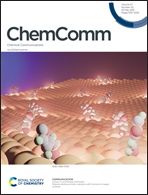Development of temperature dependent oxygen releasable nanofilm by modulating oxidation state of myoglobin†
Abstract
Controlled release of oxygen from myoglobin was achieved by modulating autoxidation of oxymyoglobin using ascorbic acid as a reductant by temperature variation. Long-term storage, prompt release and re-storage of oxygen were also available with this system. Furthermore, 20 nm thick nanofilms composed of oxymyoglobin and type I collagen containing ascorbic acid could successfully show autoxidation of oxymyoglobin in response to environmental temperature. The ultrathin nanofilms will be useful as oxygen-controlled releasable scaffolds for tissue engineering application.



 Please wait while we load your content...
Please wait while we load your content...